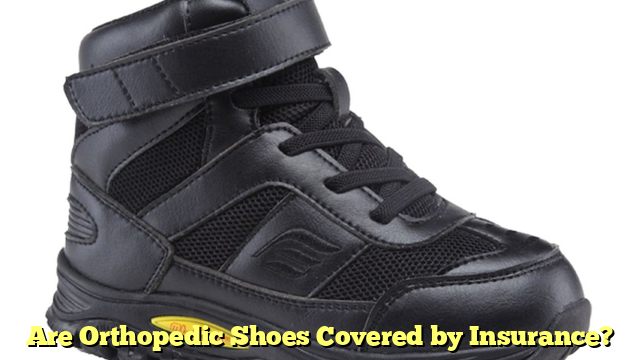Are Orthopedic Shoes Covered by Insurance?
Are orthopedic shoes covered by insurance? Many policies cover these types of footwear as a medical necessity. Medicare Part B even covers custom-made orthotics for minor foot deformities. Though they are usually more expensive than stock shoes, they are often medically necessary to address a medical condition. Here are some of the reasons that your insurance policy will pay for custom orthotics. Read on to learn more. Then, decide if you need them.
Custom-made orthotics accommodate minor foot deformities
Premade orthotics are available at your local pharmacy, but they are not as effective for treating mild to moderate foot deformities. While these may cost less than custom orthotics, they may worsen underlying conditions such as flat feet and knee problems. For this reason, it is important to find a certified orthotic specialist before purchasing a pair of premade orthotics. In addition to being less expensive, premade orthotics may not be covered by insurance.
If you do not have Medicare, your health insurance policy might cover orthotics. However, if you have an employer-provided health insurance plan, you’ll have a better chance of getting orthotics covered. Many companies also offer a variety of other types of medical coverage, including foot orthotics. If you are covered by a workplace health insurance plan, you can inquire about which companies offer custom orthotic devices.
In addition to health insurance, your employer may provide the services of a podiatrist. Podiatric physicians are specialists in feet and treat musculoskeletal conditions. They can prescribe custom orthotics for their patients. Additionally, some chiropractors offer custom orthotic shoe inserts. If you have any questions about your insurance plan, contact your company. It’s worth your time to find out if your insurance company covers orthotics.
They are medically necessary to compensate for minor foot deformities
Orthopedic shoes are custom-made footwear that correct leg and foot disorders. These shoes have been specially designed to accommodate leg lengthening or shortening of at least one and a half inches. In some cases, however, a shoe may only be medically necessary for a minor foot deformity. In such cases, a medical professional may recommend a custom-made shoe.
Regardless of the condition, custom-fit, or Oxford-style orthotics are available in various types. Orthopedic shoes may be covered under insurance, but only if they’re part of a leg brace. Orthopedic shoes help leg braces work more effectively, so you should check with your insurance provider to see if you’re covered for these special shoes.
Generally, orthopedic footwear provides support, alignment, and prevention of foot deformities. Orthotics can also be used to support weak joints. While the medical necessity of orthotics depends on the individual, it is generally reasonable to use them to treat an illness. Other times, it may be needed to correct a malformed body member. If this is the case, it would be medically reasonable to prescribe orthotics.
They are covered by Medicare Part B
When you’re looking to get the right footwear to relieve pain or support a particular foot condition, you’re probably wondering: Are orthopedic shoes covered by Medicare Part B insurance policies? If so, you’ve come to the right place. Medicare Part B insurance can help you with the costs of orthopedic shoes, and many types of footwear are covered. These include shoes that are custom-made for your foot type and made with therapeutic inserts and modifications.
According to Dr. James P. Ioli, a podiatrist at Harvard Medical School, Medicare pays for three pairs of extra-depth shoes and inserts for people with diabetic neuropathy or insensitive feet. To get these shoes, your treating physician must complete a certificate of medical necessity for the shoes. The physician must document this in your medical record. To receive Medicare-approved diabetic shoes, you’ll need a prescription from a qualified provider.
Orthotics are a type of shoe that supports weak joints and muscles. Some podiatrists prescribe custom-fitted orthotics for your feet. However, Medicare may not cover the costs of orthotics for diabetics. For these reasons, it’s always best to contact a Medicare-approved supplier. You can then shop for the best plan that suits your needs. If you’re eligible, you can save up to 80 percent on the cost of your orthotics.
They cost more than stock shoes
If you suffer from leg or foot pain, you may have heard that orthopedic shoes cost more than regular shoes. In the past, this was true: orthopedic footwear was ugly and clunky. But times have changed. Today, orthopedic footwear can be both stylish and comfortable. Here are some of the benefits of orthopedic footwear for women. If you have been suffering from foot or leg pain, you might consider investing in an orthopedic pair of shoes.
They require trial fittings
If you’re considering purchasing a new pair of orthopedic shoes, you’ve probably wondered if your health insurance covers the cost. In most cases, these shoes are covered under certain circumstances, including being part of a leg brace and being medically necessary to the proper function of the leg brace. If your insurance plan doesn’t explicitly cover orthotics, the cost of the matching shoe may be covered but you’ll likely need to pay a copayment to obtain the shoes.
While most policies cover orthotics under Part B, you must make sure that your doctor and suppliers are participating in Medicare. Your insurer may require a doctor’s prescription to cover orthotics. In addition, the suppliers you choose must accept assignment. If they don’t, they may charge you whatever they want, despite Medicare’s rules. But if you choose a participating supplier, they’ll only be charged a Medicare-approved amount. You will also have to pay a Part B deductible.
Custom orthotics aren’t covered by Medicare. Custom orthotics, including custom ones, are excluded from benefits by many employers. Although some carriers comply with state mandates for specific conditions, many do not. Moreover, Medicare views custom orthotics as a preventive service and therefore doesn’t cover them. But it does cover diabetic shoes and inserts on a yearly basis. That’s a significant change in the coverage for these items.
They do not meet the criteria for medical necessity
Orthopedic shoes are considered medically necessary if they are an integral part of the prosthesis. Generally, however, shoes that are worn separately from a brace or partial foot prosthesis are not considered medically necessary. There are some exceptions to this rule, though. In most cases, prosthetic shoes are covered under all insurance plans. This article will discuss a few common situations when orthopedic shoes are covered.
The medical necessity for orthotic shoes depends on the type and frequency of use. Separate foot orthotics for more than one pair of shoes may not qualify as medically necessary. Alternatively, they may be covered when attached to a brace. If the brace includes an abduction bar, the orthotic shoe is medically necessary. Therefore, patients should discuss whether orthotics shoes are covered before purchasing them.
To qualify as a medically necessary medical expense, orthotic shoes must meet specific requirements. For example, the orthotic shoe must have a timely and complete order from a treating professional. The orthotic shoe must also meet specific standards for proper fitting and fit. Orthopedic shoes must also be fabricated over modified lasts to meet specific foot and leg measurements. Orthotics may need refurbishment at some point in their life, but they should not be replaced more frequently than every two years.

